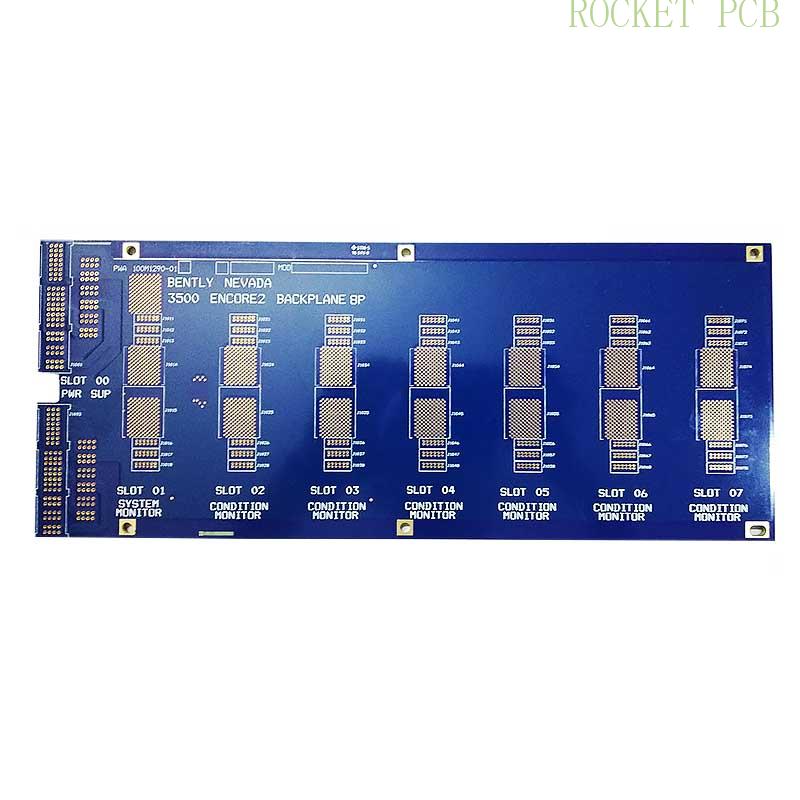How to Get BGA Soldered on PCBs in SMT Assembly
Because BGA (Ball Grid Array) solder balls are hidden under the body, it’s quite difficult to inspect their performance. Up to now, Automated X-ray Inspection is applied to help exposing the defects of BGA solder balls including void, displacement, bridging, cold solder etc. Once defects are found out, rework has to be implemented. However, rework always costs a lot, which is absolutely NOT called for by OEMs. Therefore, it is first and foremost to guarantee the quality of BGA solder balls by effectively stopping solder defects from being generated.
It’s important to indicate that all the tips are summarized based on manufacturing experience in Rocket PCB’s workshop. Rocket PCB has been serving globe electronics for 14 years. Up to now, we’ve served more than 10,000 customers from over 80 countries and regions around the world with HIGH-RELIABILITY and LOW-COST bare PCBs and assembled PCBs that have been widely applied in numerous fields covering medical care, industrial control, transportation, military, aerospace, IoT etc.
PCB Fab + PCB Assembly Under One Roof
BGA Soldering Mechanism
When solder is heated to the temperature above its melting point, the oxide layer on copper surface of pad is cleaned under the activation of flux. Meanwhile, both copper surface and metal particles in solder can get activated to sufficient extent. The melting solder get wet up on pad surface that has been cleaned by flux with chemical diffusion reaction caused. And, IMC (Intermetallic Compound) is finally and directly generated on the surface of solder and pad.

How to Get BGA Perfectly Soldered on PCB in SMT Assembly Process
To optimize BGA soldering in SMT process, essential measures should be made before and during soldering process. Thus, the discussion will be displayed from two aspects: before soldering and during soldering.
Before Soldering
a. PCB Board Preparation
First, proper surface finish should be picked up to be compatible with project or product requirement. There are a couple of surface finishes available and surface finish introductions and comparison should be clear in your mind. Some products call for ROHS requirement and lead-free surface finish, lead-free HASL, lead-free ENIG or lead-free OSP can be applied.
Second, PCBs should be properly stored and applied. PCBs should be packed in vacuum and container should include moisture barrier bag and moisture sensitive indicator card. The indicator card is capable of conveniently and economically inspecting whether humidity is in the control range. The color on card can be seen to tell about the humidity within the bag and the effect of desiccant. Once the humidity inside the bag exceeds or equals indicator value and the corresponding circle will become pink.
Third, PCBs should be baked and/or cleaned. Baking can be implemented on PCBs to stop moisture from leading to soldering defects. Baking can be carried out under the temperature of 110±10℃ for two hours. Also, PCB surface may be covered by dust in the process of PCB moving and storage. Therefore, it’s so important to thoroughly clean PCBs prior to assembly. In Rocket PCB, ultrasonic cleaner is used on assembled PCBs to guarantee them to be totally clean. As a result, board reliability can be greatly ensured.
Quickturn PCB Prototype at Low Cost
b. BGA Preparation
As a type of moisture sensitive component, BGAs have to be stored in constant temperature and dry environment. Operating staff should conform to rigorous operations in the whole process so that components are stopped from being affected. Generally speaking, BGA components should be stored in moisture buster cabinet with temperature in the range from 20 to 25℃ and humidity being approximately 10%. And, it’s better to depend on nitrogen.
BGA components need to be baked before soldering and the soldering temperature shouldn’t exceed 125℃ because too high temperature may cause modification of metallographic structure. When components enter reflow soldering phase, it’s easier to cause disjunction between solder balls and component package, reducing SMT soldering quality. If the baking temperature is too low, moisture will be difficult to be eliminated. Therefore, it’s suggested that components be baked before SMT assembly so that the interior moisture inside BGA can be in time eliminated. Besides, the heat resistance of BGA can be improved as well. Furthermore, BGA should be cooled down for half an hour after being baked and before their entrance to SMT assembly line.
During Soldering
Actually, it’s not easy to control reflow soldering so it’s of great significance to capture optimal reflow temperature profile in order to achieve high performance of BGA components.
a. Preheating Zone
The preheating phase sees constant temperature rise on PCB and activates flux to be activated. Generally speaking, the temperature rise should be controlled in a steady speed to stop PCBs from being deformed due to rapid heating. The ideal temperature rise should be controlled below 3℃/s and the ideal temperature rise is 2℃/s. Time span should be controlled between 60 and 90 seconds.
b. Thermal Soak Zone
The thermal soak zone sees the volatilization of flux. Temperature should be maintained in the range from 150℃ to 180℃ for 60 to 120 seconds so that flux can be totally volatilized. The temperature rise speed is generally in the range from 0.3 to 0.5℃/s.
c. Reflow Zone
The temperature of reflow zone will pass melting temperature during this zone with solder paste melted to liquid. During this phase, the temperature of 183℃ above should be maintained for 60 to 90 seconds. Either too short time or too long time possibly causes quality issues of soldering. Thus, it’s extremely essential to control the time span at the temperature of 220±10℃. Normally, the time should be controlled within the range from 10 to 20 seconds.
d. Cooling Zone
In cooling zone, solder paste starts to solidify with components solidly fixed on PCB. Moreover, the temperature decrease should be controlled to be not too high, generally below 4℃/s. The ideal temperature decrease is 3℃/s. Too high temperature decrease will cause PCBs to be deformed, substantially decreasing BGA soldering quality.
As far as the requirement discussed above is met, BGA components will be soldered onto PCBs in high quality. Rocket PCB specializes in one-stop PCB assembly and the finest pitch of BGA we can deal with is 0.35mm. Besides, rigorous inspections are implemented to ensure products’ performance and reliability, including AOI and AXI.





